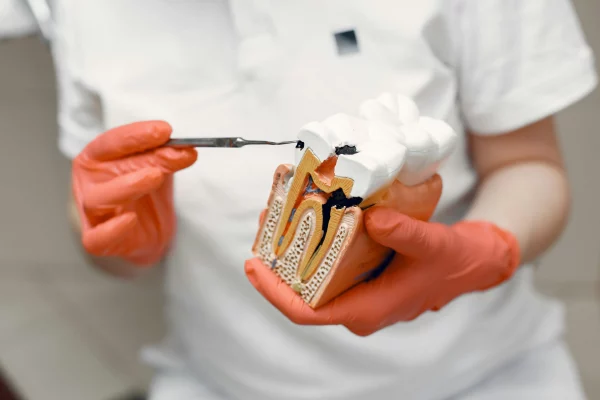Toothaches are undeniably unpleasant, yet the prospect of losing a tooth introduces an entirely different set of complications. Notably, individuals are not forced to choose between enduring persistent pain and accepting a visible gap in their dentition. Root canal therapy serves as an effective intervention in such scenarios. Despite its negative reputation, root canal treatment is a clinically sound method for alleviating discomfort while preserving the natural tooth structure.
At GP Dental, the practice is committed to ensuring that root canal procedures are conducted with the utmost precision and patient comfort in mind. For those who suspect they may require this intervention, or who are apprehensive due to common misconceptions, it is important to note that contemporary techniques have rendered the process far less daunting than its reputation suggests. The team is prepared to provide clear guidance, address concerns, and demonstrate how modern endodontic care can be both efficient and essentially painless.
What Is a Root Canal and How Does It Work?
Alright, let’s switch gears and keep things scholarly. So, a root canal isn’t some archaic dental punishment, far from it. Think of it as a clinical intervention aimed at preserving a compromised tooth. When the internal pulp becomes inflamed or infected often due to deep decay or trauma, the dentist removes the affected tissue, meticulously cleans and disinfects the canal system, and then seals it to prevent further issues. It’s essentially restorative dentistry in action.
Now, as for the reputation root canals have for being excruciatingly painful? That’s largely a misconception. In reality, the procedure is performed to alleviate existing pain, not exacerbate it. Thanks to advancements in dental anesthesia and techniques, most patients experience minimal discomfort. Millions have retained their natural teeth because of root canal therapy. So, when discussions around root canals arise, it’s important to recognize that the procedure is far less intimidating than its reputation suggests.
Understanding the Structure of Your Tooth
Teeth, contrary to their seemingly simple appearance, are structurally quite complex. At the outermost layer, we find enamel, which is, interestingly, the hardest substance in the human body. Beneath that lies dentin, a supportive tissue that provides both strength and resilience. At the core sits the pulp, a soft region containing nerves and blood vessels, which is critical for tooth vitality and sensation.
When the pulp becomes compromised whether due to significant decay, structural fractures, or repeated dental procedures, the consequences can be severe. Patients may experience intense, persistent pain and, in some cases, the development of an abscess, which is an accumulation of pus resulting from infection. In such scenarios, a root canal procedure is often indicated to remove the diseased pulp, thereby alleviating pain and preserving the natural tooth. While not a glamorous intervention, root canals are essential in preventing tooth loss and further complications.
Step-by-Step Process of a Root Canal Procedure
| Step 1 | X-rays and clinical evaluation determine the extent of the damage. |
| Step 2 | The area is completely numbed. |
| Step 3 | A small hole is made in the tooth to access the pulp. |
| Step 4 | Infected tissue is removed, and the canals are cleaned and shaped. |
| Step 5 | The canals are filled with a biocompatible material (usually gutta-percha). |
| Step 6 | The opening is sealed with a temporary or permanent filling. |
| Step 7 | In many cases, a crown is added later for full protection. |
Typically, the entire procedure is completed within one or two appointments. Most individuals report that the discomfort is comparable to that experienced during a routine dental filling, so there is generally little cause for significant concern.
Signs You Might Need a Root Canal
When the inner tissue of a tooth, the pulp, becomes inflamed or infected, this is not a situation that can be dismissed or neglected. The pulp houses both nerves and blood vessels, so any infection or irritation there typically results in pronounced pain and significant inflammation. If the condition is not addressed promptly, the infection may extend beyond the tooth itself, potentially causing destruction of the surrounding bone. In more severe cases, the bacteria can even enter the bloodstream, posing risks to other bodily systems. Therefore, prompt dental intervention is essential to prevent serious complications.
Persistent Tooth Pain and Sensitivity
Tooth pain can be particularly distressing. Experiencing discomfort when biting or eating often signals an underlying issue, such as infection. Persistent sensitivity to temperature like the sharp sensation from hot beverages or cold foods should not be dismissed as normal. Lingering pain after exposure to these triggers is generally considered abnormal and warrants professional evaluation.
Swelling, Abscess, and Discoloration
- Swelling or tenderness in nearby gums may indicate a deep infection.
- Pimples or pus on the gums could mean an abscess has formed.
- Darkening or discoloration of the tooth can signal nerve damage.
If you begin to observe any unusual changes with your teeth, it is strongly advisable not to disregard these symptoms. Promptly scheduling a visit to a dental professional is essential. Early intervention can mitigate potential complications and reduce the likelihood of more extensive dental issues developing over time.
Is Root Canal Treatment Painful?

Let’s get something straight, this isn’t some sort of medieval ordeal. The widespread anxiety surrounding root canals is, frankly, a bit dramatic. With current advancements in dental technology and anesthesia, the process is generally straightforward and efficient, often no more uncomfortable than a standard filling. So, there’s really no cause for alarm. Dentists today are focused on minimizing discomfort and addressing pain swiftly; the days of root canals being synonymous with agony are, for the most part, behind us.
Modern Techniques and Anesthesia for a Comfortable Experience
At GP Dental, our primary objective is to ensure patient comfort by effectively eliminating pain during procedures. Local anesthesia is administered to thoroughly numb the targeted area, allowing patients to remain conscious but free from discomfort throughout the treatment. Unlike sensationalized portrayals in media, there is no loss of consciousness involved.
Our dental team employs precise techniques and advanced instruments to perform procedures with great care and efficiency. In reality, the pain or distress that typically prompts a patient to seek dental care such as severe infection or nerve inflammation tends to be significantly more intense than the experience of the root canal itself. Frequently, patients express immediate relief upon the removal of inflamed pulp tissue, often noting surprise at how manageable the process was compared to their initial anxieties.
What to Expect Before, During, and After Treatment
Before: Initially, we will conduct a thorough assessment, rest assured, we will guide you through each step so you remain informed throughout the process.
During: The procedure itself typically lasts about an hour, possibly slightly longer. You will be administered local anesthesia to ensure your comfort; most patients report minimal, if any, sensation during this time.
After: Post-procedure, mild soreness or tingling sensations may persist for a couple of days, but these symptoms are generally manageable. Over-the-counter analgesics such as Tylenol are usually effective for relief.
A follow-up appointment will be necessary to either place a crown or complete the restoration with a final filling, depending on your individual case. Once this is completed, you should be able to resume normal eating habits without further discomfort or sensitivity.
Why Choose GP Dental for Your Root Canal Procedure?
At GPD Dental, patients receive an elevated standard of dental care, with particular emphasis on both clinical expertise and patient comfort. The clinic integrates advanced dental technology alongside a highly trained staff, ensuring that root canal procedures are executed with exceptional precision and efficiency. This approach significantly reduces discomfort and anxiety commonly associated with such treatments. Rather than perpetuating the negative stereotypes surrounding root canals, GPD Dental reframes the experience as a routine aspect of maintaining oral health, ultimately contributing to improved patient outcomes and satisfaction.
Experienced Endodontists and State-of-the-Art Technology
So, let’s set the record straight: our team isn’t just your garden-variety dental practitioners. We’re endodontists, and believe it or not we genuinely have a passion for root canal therapy. The clinic’s kitted out with state-of-the-art technology: digital radiography, advanced rotary instruments, and even 3D imaging that wouldn’t look out of place in a science fiction film. All this equipment? It means procedures are both precise and efficient. And if you’re dealing with a particularly complex case that other clinicians won’t tackle, you’ll likely find yourself referred to us.
Furthermore, we aren’t content to rest on our laurels. We regularly pursue continuing education and stay abreast of emerging techniques in endodontics, because, let’s face it, no one wants a clinician who’s stuck in the past.
Personalized Care to Ensure a Quick Recovery
It’s essential to acknowledge that individuals approach dental visits with unique concerns and expectations. Some patients may experience significant anxiety, while others might simply desire distractions, such as streaming media, throughout their appointment. Recognizing this, our practice prioritizes attentive listening to fully understand each patient’s worries, goals, and preferred approaches to care. We strive to move beyond standardized checklists to deliver genuinely personalized treatment.
Upon completion of procedures like root canals, our support does not cease. Rather than simply discharging patients, we provide thorough guidance on post-treatment care to promote optimal recovery. Furthermore, our team remains accessible for ongoing questions or concerns, admittedly, perhaps not in the middle of the night, but we endeavor to be consistently supportive throughout the healing process.
Conclusion
At GPD Dental, our primary objective is the preservation of natural teeth, rather than unnecessary extraction. Root canal therapy, contrary to common misconceptions, is designed to maintain the integrity of your original tooth and can be performed with minimal discomfort. Our skilled team employs advanced technology and prioritizes patient comfort throughout every stage of the procedure.
We provide thorough explanations of each step and utilize gentle, effective techniques to ensure a calm environment for our patients. Delaying treatment may result in increased pain or complications, so early intervention is crucial. By scheduling a consultation promptly, you maximize the likelihood of saving your tooth and sustaining a healthy, natural smile for the long term. Your oral health and your smile are valuable assets deserving of expert care.
Frequently Asked Questions (FAQs)
1. How do I know if I need a root canal or just a filling?
If tooth decay or damage extends to the pulp, the inner tissue containing nerves and blood vessels, a simple filling will not be sufficient to restore the tooth. At this stage, the tooth may require more advanced treatment such as a root canal. Our dental team uses a combination of digital X-rays and comprehensive oral examinations to assess the extent of the damage. This diagnostic process ensures that we recommend the most effective and appropriate treatment plan. Timely identification of pulp involvement is essential for preserving the tooth and preventing further complications.
2. How long does a root canal last?
When properly treated and maintained, a tooth that has undergone a root canal can remain functional for a lifetime. The procedure removes infected or damaged tissue, but the structural integrity of the tooth still needs reinforcement. That’s why placing a dental crown is often recommended, it provides strength and protects the tooth from future trauma or decay. With good oral hygiene and regular dental checkups, patients can expect long-lasting results. Investing in a crown not only restores function but also helps avoid the need for more extensive treatment down the road.
3. Can I eat after a root canal?
After your root canal treatment, it’s important to wait until the numbness wears off before eating to avoid accidentally biting your cheek or tongue. In the meantime, stick to soft foods that don’t require heavy chewing, such as yogurt, soup, or mashed vegetables. Until your permanent crown is placed, avoid hard, crunchy, or sticky foods that could damage or dislodge the temporary filling. These precautions will help protect the treated tooth and promote healing. Following your dentist’s aftercare instructions closely can make a significant difference in recovery and long-term outcomes.
4. Will my tooth look different after a root canal?
A properly fitted crown not only restores the shape and strength of a damaged tooth but also enhances its appearance. Once placed, the crown mimics the look and function of a natural tooth, blending seamlessly with your smile. Modern materials used in crown fabrication are both durable and aesthetically pleasing. With regular care, your crowned tooth can withstand normal chewing forces just like your original teeth. Many patients find that their restored tooth feels even better than before the procedure.
5. What happens if I delay treatment?
Putting off a root canal can have serious consequences for your oral health. As infection spreads, it can lead to the formation of painful abscesses and the eventual loss of the affected tooth. In some cases, the infection may even spread to surrounding tissues or into the bloodstream, posing greater health risks. Early treatment can eliminate the infection, relieve discomfort, and preserve your natural tooth. Seeking prompt dental care ensures the most favorable outcome and helps you avoid more extensive and expensive interventions later.


